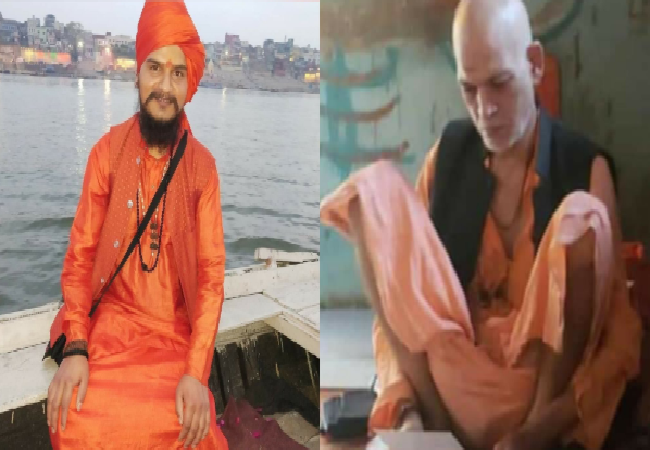On Thursday August 20 , Swami Avdheshanand Giri of Juna Akhada demanded CBI investigation into the Palghar mob lynching incident. The horrific incident that happened on the night of April 16 when the two sadhus(Kalpavriksha Giri Maharaj and Sushil Giri Maharaj) and their driver were travelling from Kandivali in Mumbai to attend a funeral in Gujarat`s Surat amidst the nationwide lockdown . Their vehicle was stopped, and they were attacked and killed by a mob in Gadchinchile village in the presence of police officers. Can it be called a coincidence that Palghar is not only a stronghold of Communists but is also one of the areas from where Christianity originated in this region of Maharashtra and henceforth became a hub for Christian Missionaries’ activities ?
This is not the first time that Hindu ascetics have been attacked in India and a wide section of intelligentsia maintained a deafening silence.
Palghar lynching and the subsequent development reminds one that the pattern of the perpetrators has remained unchanged , as one recalls the gruesome killing of 84-year-old Swami Lakshmanananda Sarswati on the night of August 23, 2008. He was shot and savagely hacked with sharp weapons by his attackers.
His opposition to conversions of hapless tribals into Christianity and his welfare workfor the welfare of the local forest dwellers in Odisha’s tribal dominated Kandhmal district cost him his life.
Swami Lakshmanananda was born in 1924 at village Gurjung in the forest-dominated Phulbani (Kandhamal) district of Odisha .Despite being a householder and father of two children, one day he finally took the path to Himalayas for spiritual practices with the aim of fulfilling his resolve to dedicate his life for the society. In 1965, he returned and joined the Gau Raksha(Cow protection) movement.
In 1969, he started his social service project in Chakapad, a remote village in d Phulbani (Kandhamal) district. Besides social and spiritual development of the local tribal population, he also worked for four decades to empower them through various activities. He established a school based on Gurukul system and a college to teach Sanskrit in Chakapada..
In 1988, a residential school ‘Sankaracharya Kanyashram’ was set up at Jalespatta for providing education to the girls. .He also established a Seva school at Banki and an ashram at Panigola in Angul district. He renovated several temples also, the prominent among them were Birupakshya, Kumareswar and Jogeswar .
The Birupakshya temple surrounded by scenic beauty at Chakapada is situated in Kandhamal. stands on an elevation of about 800ft from sea level. Chakapada has also been mentioned in the Ramayana. The old age name of Chakapada is Ekachakranagari. Here exists a Shiva temple where Linga is bent to south and all the trees of the place are also bent to south.
Swami Lakshmananda was well versed in Vedanta philosophy, Sanskrit grammar and hence was known as “Vedanata Kesari’”.
He had started night school for adult education. His efforts resulted in farmers at Udaygira and Raikia blocks area in Odisha producing the best quality and highest quantity of beans. A vegetable cooperative society was also formed which led to improvement in the economic condition of the local population.
He also established “Matths” on the hill tops in several parts of the district and told the villagers that the trees should only be cut in emergency after taking the permission of the village committee. That worked tremendously. Much before any government agency had started the joint forest management system, Swamiji had implemented it successfully in 1970s.
He was very much serious for preservation and protection of tribal culture and tradition. He had established and renovated the tribal deity place (Dharanipenu) in several places. Similarly he had started a Rathyatra through out the Gajapati and Kandhamal district during which thousands of tribal were motivated to go back and adhere to their own belief systems.
He taught the people to protect cattle from slaughtering. On several occasions he staged demonstration, dharanas and participated in the hunger strike in several parts of the state. He toured through out the state for this cause.
He was associated with several socio-cultural and religious organizations. He has established and renovated several temples in different parts of the state.
In 1986, Swamiji set up the deities of Lord Jagannath Swami, seated in Jagannathpuri, in a huge chariot, and travelled through the forest districts of Odisha for about three months. Through this chariot, about 10 lakh forest dwellers and women got connected with Lord Jagannath and worshiped Him reverently. Through this chariot, Swamiji created public awareness against social evils and promoted cow protection.
His main work in Kandhamal was protecting the tribals from Christian conversion. He tried his level best to bring back the tribals to their original faith. Inspired by his work, thousands of people in different parts of the states became his disciple. But he also targeted for his work. From 1970 to December 2007, he was attacked 8 times. But in spite of these attacks, Swamiji’s resolve to stop conversions of forest dwellers into Christianity was unwavering. Swamiji used to say, “Whatever they try, they will not be able to obstruct the divine work.”
On 23rd Aug 2008 at 7:30 PM at Kanya Ashram Jalespatta in Kandhamal District of Odisha, Swamiji was interacting with inmates of Ashram after his prayer. Fifteen young masked men, armed with AK47 rifles and other weapons entered the Ashram and brutally killed him.
Who can speak for them whose life remain confined to sacred rites, spiritual activities and imparting ancient wisdom which ultimately leads to peace, prosperity, and welfare of the entire humanity. But unfortunately, they are being targeted repeatedly as they are seen as a hindrance to the dubious activities such as Christian conversions. It is time to break this deafening silence.
(The writer is author of recently released book ‘Ramjanmabhoomi: Truth, Evidence, Faith’. She is a Senior Fellow at New Delhi based think tank Vichar Vinimay Kendra. The views expressed are personal.)

